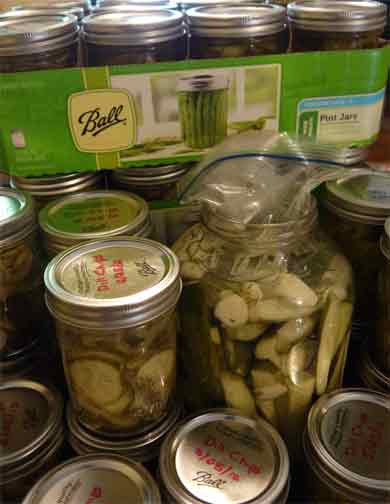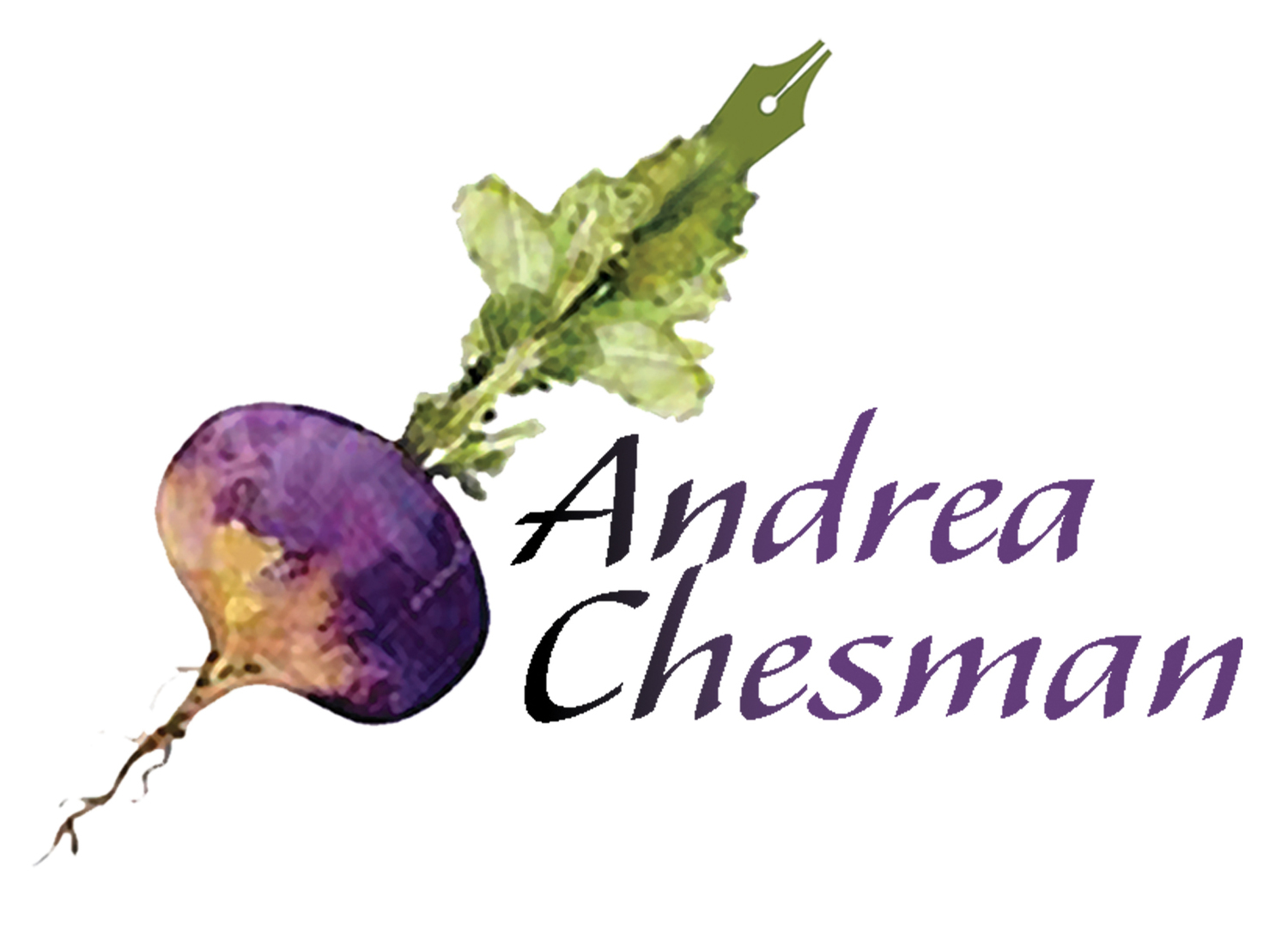The Pickled Pantry is here! And now my summer truly begins. I am planning to take my show on the road and bring dilly happiness to folks at book stores, festivals, farmers’ markets, and cooking classes.
Over Memorial Day weekend I pickled a case (that’s 48 pounds) of pickling cucumbers into dill chips, bread and butters, and curry chips. I have 60 pint jars of pickles aging in a corner of my dining room. Then I bought another 5 pounds of cukes and made a gallon of half-sours, which I hope to be ready by Sunday, June 8, when I take part in the Grand Opening of Phoenix Books in Burlington, Vermont. 60 jars of pickles plus a gallon of half-sours
60 jars of pickles plus a gallon of half-sours
People often ask how long it takes to write a cookbook like this, which has about 150 recipes. The answer is usually, “All my adult life.” If the book covers a subject I care passionately about – cooking vegetables, making pickles, preserving – then, truthfully, I’ve been at it since I left my mother’s house, a long, long time ago.
Pickles got me started as a cookbook author. As the newly anointed cookbook editor for Garden Way Publishing, which specialized in books about gardening and other self-sufficiency, homesteading skills, I was looking for someone to write a book about pickling. When I couldn’t find anyone, I said to the publisher, “Heck, I could write it myself.” That book was Pickles and Relishes: 150 Recipes from Apples to Zucchini, and it was publishing in 1983. Then Garden Way morphed into Storey Publishing but I went freelance rather than relocate when the company moved. My next book was Summer in Jar, which included jams as well as pickles. That publishing company was bought out by a Christian publisher with no interest in cookbooks. But I was off and running, writing and editing cookbooks as a freelancer, writing for magazines, gardening, cooking, and raising a family.
Those first preserving books are out of print. The Pickled Pantry combines the very best of those original recipes with new ones. Kimchi, anyone?
All along, through busy summers and leisurely ones, I had one quest: to make the perfect dill pickle. Have I succeeded? You be the judge.
 A sample of No-Fail Half-Sour Dills
A sample of No-Fail Half-Sour Dills
No-Fail Half-Sour Dill Pickles
Makes about 2 quarts
Vinegar gives a kick-start to the pickling process in these quick and easy pickles, guaranteeing success. If you’ve never tried fermented pickles, this is definitely the recipe to start with. You can multiply this recipe as many times as you like, but these pickles are best enjoyed at 1 to 2 weeks, so it makes sense to make small batches as the cucumber season progresses.
4 cups water
2 tablespoons pickling or fine sea salt
1/2 cup distilled white vinegar
1 dill head or 6 sprigs fresh dill
4 garlic cloves, peeled
8 cups whole pickling cucumbers
1. Heat the water and salt in a saucepan, stirring until the salt is fully dissolved. Add the white vinegar and let cool to room temperature.
2. Slice 1/16 inch off the blossom end of each cucumber.
3. Pack a clean 2-quart canning jar or crock with the dill, garlic, and cucumbers, in that order. Pour in the brine. Weight the cucumbers so they are completely submerged in the brine.
3. Cover the container to exclude the air. Set the jar where the temperature will remain constant: 65° to 75°F is ideal.
4. Check the jar daily and remove any scum that forms on the surface.
5. The pickles will be ready in 2 to 3 days, although full flavor will not be reached for a week. If your kitchen is reasonably cool, you can leave these pickles out for up to 2 weeks. If the brine starts to become cloudy, refrigerate immediately to prevent spoiling. The flavor of the dill and garlic will continue to develop. The pickles will keep for at least 3 months in the refrigerator.
Kitchen Note
If your cucumbers are large, you may want to cut them into spears rather than leave them whole. Spears will pickle faster and more evenly than whole cucumbers.
Adapted from The Pickled Pantry by Andrea Chesman. ©2012 Andrea Chesman. All rights reserved.


